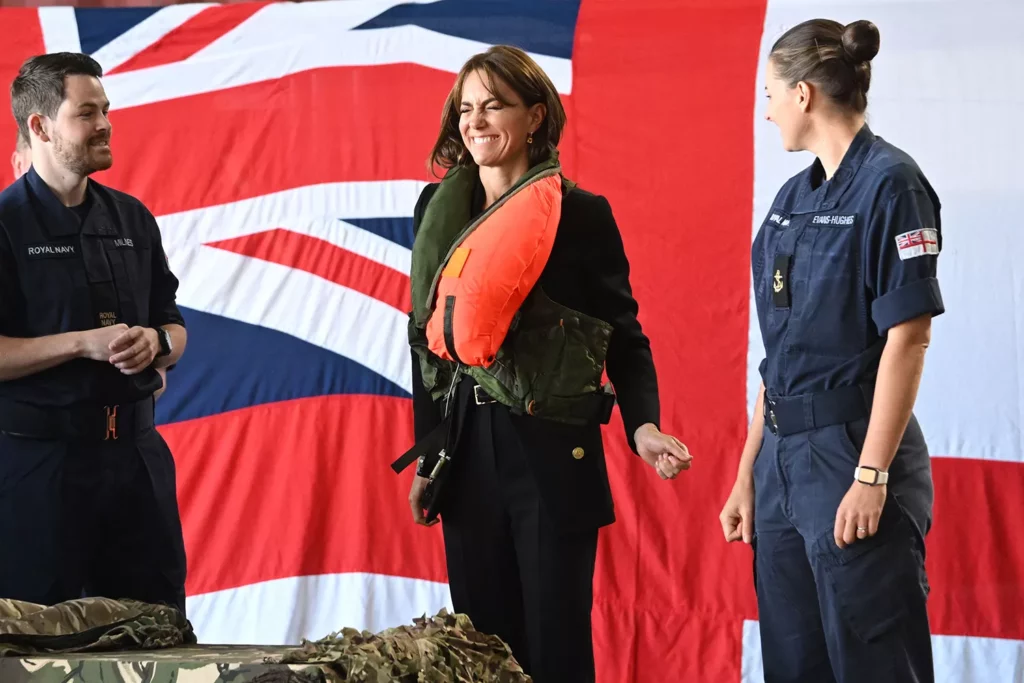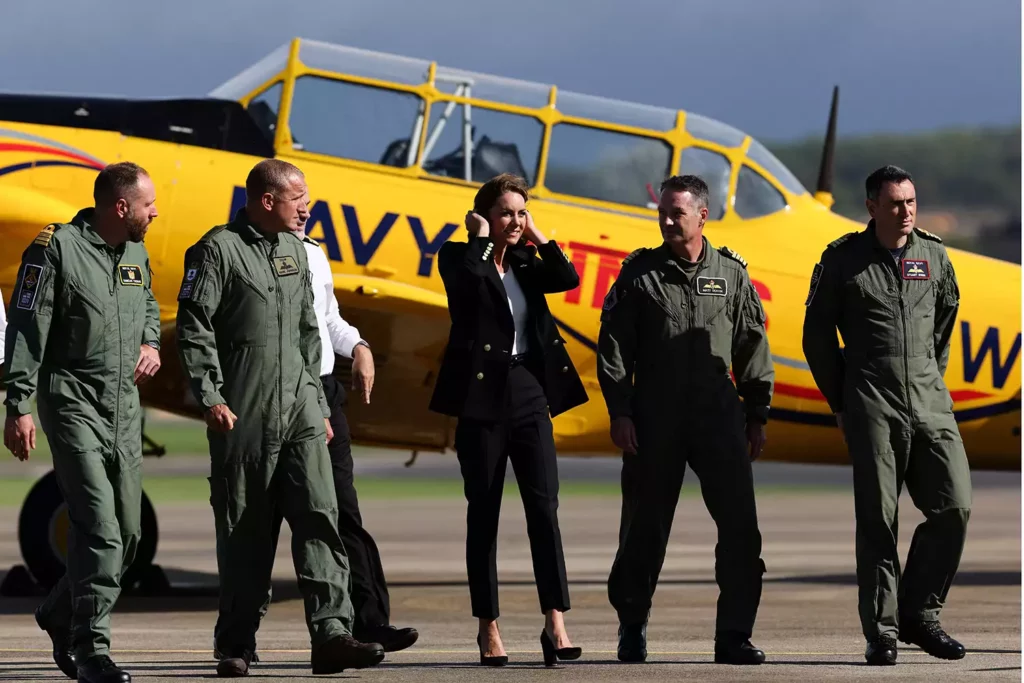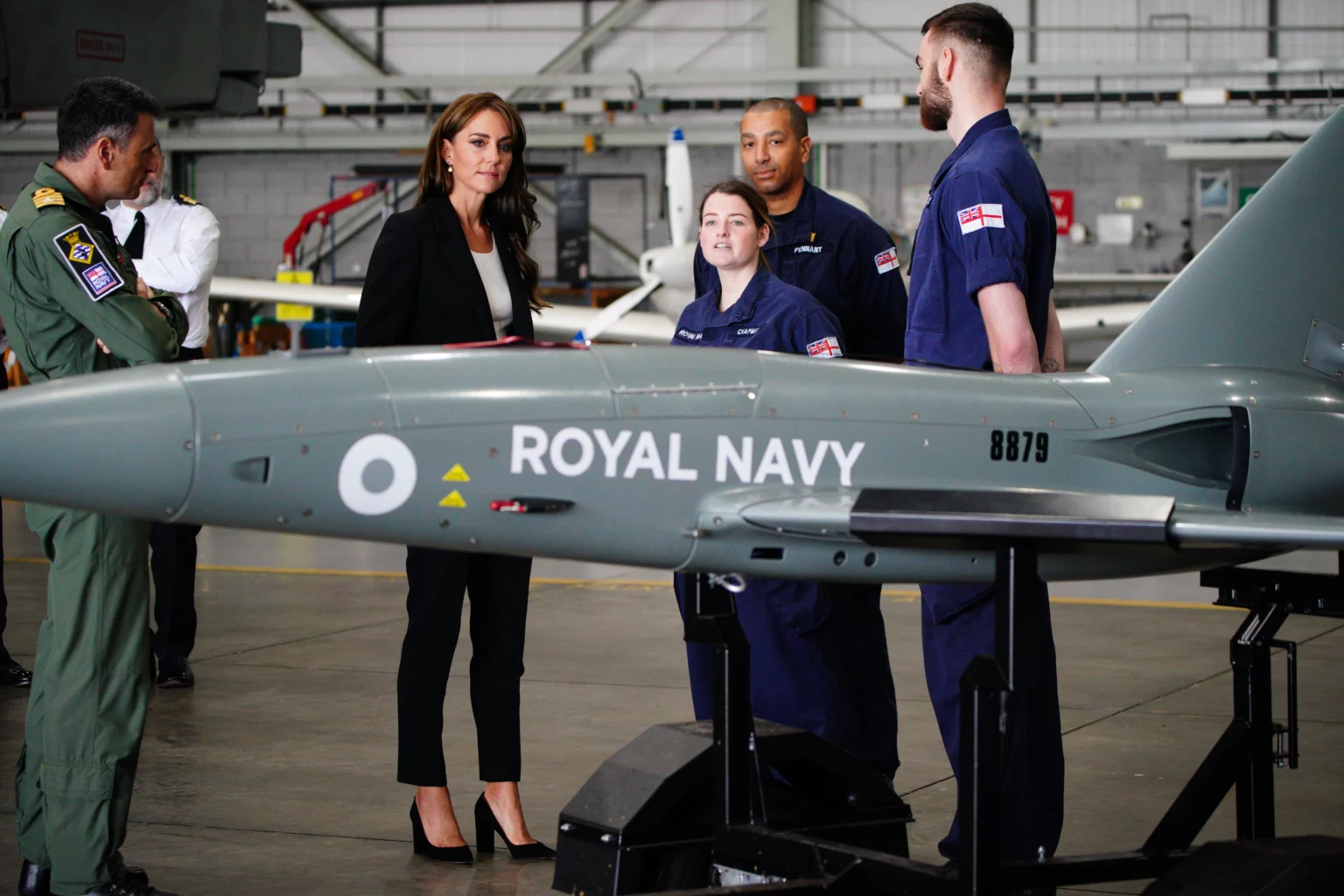On Monday, Kate Middleton, the Princess of Wales, visited the Royal Naval Air Station (RNAS) Yeovilton in Somerset, marking the first outing in her new royal role. Over the summer, King Charles designated his daughter-in-law as the Commodore-in-Chief of, the Fleet Air Arm (FAA). She carried over the role from Prince Andrew, who had the position until 2022.
The airbase, which is one of the engaged military airfields in the U.K., is abode to several frontline squadrons and training units. During her visit, Kate participated in training on a helicopter flight simulator and tried out some survival equipment.
The Princess of Wales toured the Air Traffic Control (ATC) tower, where she met staff watched the aircraft performing on the airfield, and talked with an airborne Wildcat helicopter crew.

She then headed to a hangar to visit the aircrew and other personnel including the Royal Navy Survival Equipment (SE) Technicians who give support to the aircrew including flotation equipment, helmets, and clothing. The technicians showed her some training activities with the technicians.

The crews also showed how another model, the Merlin MK2, is operated as an Anti-Submarine Warfare platform to track submarines, helping disaster relief operations and providing training for the next generation of engineers and aircrew.

Finally, Kate headed to the Wildcat Training Centre to meet the loading team who were prepared to fit a combination of weapons to the Wildcat MK2 helicopter. After this, the Princess will have the chance to fly a Wildcat MK2 in a simulator which allows aircrew to rehearse flying over land or onto ships.
Over the summer, Princess Kate and Prince William had a family fun day out at another airbase, spending the day at the largest military air show in the World, the Royal International Air Tattoo at Royal Air Force (RAF) Fairford in Gloucestershire, England. They carried along George, Charlotte, and Louis to view some planes and helicopters.

Kate connected with cadets during the visit and halted by the Techno Zone, which seeks to encourage young people to know more about science, technology, engineering, and math and regard careers in engineering, aviation, and aerospace. She also met winners of Road to RIAT, a year-long contest that challenged students from 300 schools across the U.K. to design a sustainable aircraft for the future of the RAF.




